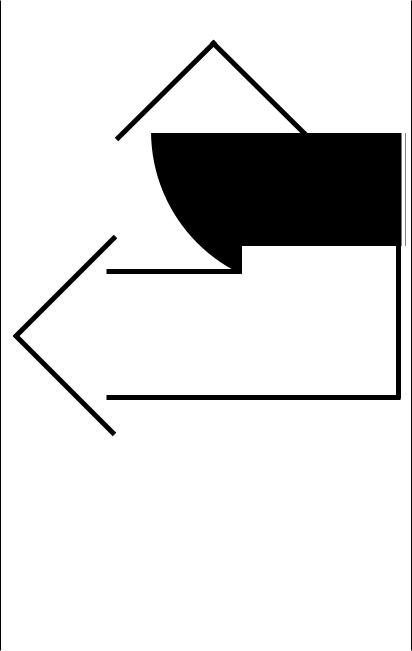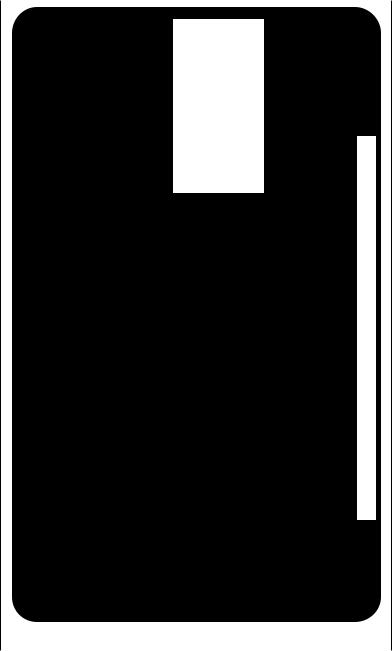
Crosby B.C., Bryson J.M. - Leadership for the Common Good (2005)(en)
.pdf
Resource C
Seven Zones
In Seven Zones for Leadership, Bob Terry presents a developmental typology of leadership approaches tied to the degree to which an organization’s environment is “fixable and knowable.” Each approach builds on the ones that precede it. Organizations in zones one and two exist in a relatively stable environment; leaders in zone-one organizations focus on honoring core values, history, and personal traits or gifts, whereas leaders in zone-two organizations ensure that people have the skills needed to accomplish functional tasks. Organizations in zone three face a more chaotic environment, so leaders focus on establishing systems that support the mission and core values while liberating human potential and promoting learning to achieve a flexible, responsive organization.
In zone four, uncertainty is even greater, and positional leaders seek to empower others in the organization in the hope of unleashing collective wisdom and action to deal with resulting problems. Large-scale interventions such as search conferences and real-time strategic change can be helpful for organizations in this zone, and Terry offers guidelines that can help leaders use these strategies effectively (see pages 206–207 in Terry, 2001).
In zone five, leaders take an even more proactive role in the face of uncertainty by helping people in the organization invent a desired future and visions of success. Leaders in this zone promote organizational competencies such as “pattern recognition, framing, outward and inward scanning, scenario writing, metaphorical thinking and generation of new insights” (Terry, 2001, p. 263).
In zone six, leaders focus on finding meaning in chaos. They help people in their organization question their assumptions and beliefs, acknowledge paradox, and become skillful improvisers.
399
400 RESOURCE C
In zone seven, leaders foster the commitment to live with paradox and act courageously in the world “to resist evil and forgive evil doers.” In this zone, leadership involves making “adept choices” by “listening to the world’s stirrings, seeking to understand them, and acting authentically in anticipation and response. When we are adept, we live at the intersection of polarities. We can go inside and outside, we can be centered and boundless, historically rooted and open to others, stable yet changeable, firm yet flexible, and unified yet diverse” (Terry, 2001, p. 306).

Resource D
Forums, Arenas, and Courts
Basing our findings partly on the work of Anthony Giddens (1979, 1984), we identify three basic kinds of public action: communicating, policy making and implementing, and settling disputes and enforcing the system’s underlying norms (Bryson and Crosby, 1993, 1996). Each is shaped, and biased, by three dimensions of power (Lukes, 1974), presented in Exhibit D.1.
The first dimension of power is emphasized by the pluralists (for example, Dahl, 1961), who argue that the power of a public actor in a democratic system varies with the issue, that there are several bases of power (wealth, status, knowledge, skill, and so on), and that there is some substitutability among power bases. In other words, winners and losers vary by issue, and society therefore is pluralist rather than elitist. The pluralists focus on observable behavior: communication, policy making and implementation, and sanctioning; key issues; observable conflict; and interests defined as policy preferences revealed by political participation.
In its second dimension, power is exercised more subtly, through manipulation of the vehicles of bias that affect decisions and action. As Peter Bachrach and Morton Baratz note, “To the extent that a person or group—consciously or unconsciously—reinforces barriers to public airing of policy conflicts, that person has power” (1962, p. 949). Various ideas, rules, modes, media, and methods (including “organization” in the general sense) are the principal barriers that bias attention toward some matters and away from others (Bachrach and Baratz, 1962, 1963; Schattschneider, 1975; Forester, 1989; Healey, 1997; Flyvbjerg, 1998). These barriers also can be described as asymmetrically distributed rules, resources, and transformation relations such as agenda control (Giddens, 1979),
401

402 RESOURCE D
Exhibit D.1. The Three Dimensions of Power.
Dimension |
Focus |
Focusing on: |
1. Interaction |
Behavioral |
Communication, policy making |
|
|
and implementation, and |
|
|
sanctioning of conduct |
|
|
Key issues |
|
|
Observable (overt) conflict |
|
|
(Subjective) interests, seen as |
|
|
policy preferences revealed by |
|
|
political participation |
|
|
|
2. Ideas, rules, |
Qualified |
1. modes, media, |
critique of |
1. or methods |
behavioral |
|
focus |
Policy decision making and nondecision making
Issues and potential issues
Overt and covert conflict
(Subjective) interests, seen as policy preferences or grievances
Ideas, rules, modes, media, or methods that influence transformation of a set of potential decisions, issues, conflicts, and policy preferences into those actually considered and those not considered
3. Deep structure Critique of |
Policy making and control over |
behavioral |
political agenda (not necessarily |
focus |
through decisions) |
|
Issues and potential issues |
|
Overt, covert, and latent conflict |
|
Subjective and “real” interests |
|
Collective basis for a set of |
|
potential decisions, issues, con- |
|
flicts, and policy preferences |
|
that people might consider |
Source: Adapted in part from Lukes (1974, p. 25) and Clegg (1989, p. 214).
RESOURCE D 403
which create decision and “nondecision” categories, and “live” issues versus “potential” issues. In other words, built-in organizational bias effectively rules out certain behaviors, which therefore will not be observed.
The third dimension reveals an even subtler exercise of power: the shaping of felt needs, rights, and responsibilities. These are rooted in deep, or “bedrock,” social, political, and economic structures. People draw on these structures to generate the rules and resources that allow human relationships, organizations, and interorganizational networks to exist (Giddens, 1979). They are also the basis for a potential set of issues, conflicts, and policy preferences, as well as decisions that leaders and citizens might address. Yet it is ideas, rules, modes, media, and methods—the vehicles of bias—of the second dimension that influence the transformation of this potential set into the actual issues, conflicts, and policy preferences and decisions that are considered in the first dimension. The vehicles of bias also determine what remains in the second dimension as potential issues, covert conflicts, individual grievances, or nondecisions (see Figure D.1).
The three-dimensional view of power reveals how society’s institutions, as embodiments of bias ultimately based on the social bedrock, lead citizens and policy makers to consider some policy decisions, issues, conflicts, and preferences while ignoring others. In the African American men case, institutional bias in government programs made it difficult for administrators to view the situation of these men holistically. In the World Business Council case, market structures have allowed businesspeople to ignore the environmental costs of production and of many resulting products.
Connections Between Public Action and Social Structure
Within and among organizations, action is linked to the three dimensions of power primarily through designing and using forums, arenas, and courts. In these shared-power settings, people interactively draw on third-dimension social structures or relationships and second-dimension organizational and interorganizational ideas, rules, modes, media, or methods to produce such instrumental effects as discussion papers, policy statements, decrees, and

Figure D.1. Dividing What Is Possible Into What Is Seen and What Is Not Seen.
|
|
|
|
|
|
nonissues, conflicts, |
andunsupported |
|
policypreferences |
|
|
|
|
|
|
|
|
|
|
|
|
Nondecisions, latentorcovert |
|
|
|
|
basisofa setofdecisions, |
conflicts,and preferences |
|
||
|
|
|
|
|
|
|
|
|
|
|
|||||
|
|
|
|
|
|
|
|
|
|
|
|||||
|
|
|
|
|
|
|
|
|
|
|
|||||
|
|
|
|
|
|
|
|
||||||||
|
|
|
|
|
|
|
|
|
|
|
|
|
|
||
|
|
|
|
|
|
|
|
|
|
|
|||||
Actualdecisions, issues,conflicts, andpolicy |
preferencesthat |
|
areaddressed |
|
|
|
|
|
|
|
|||||
|
|
|
|
|
|
|
|
Collective potential |
issues, policy |
||||||
|
|
1stdimensionofpower |
|
|
Ideas,rules,modes, |
media,andmethods |
2nddimensionofpower |
|
|
|
Socialstructure |
3rddimensionofpower |
|||
|
|
|
|
|
|
|
|||||||||
|
Humanaction |
|
|
|
|
|
|||||||||
RESOURCE D 405
action plans. At the same time they produce instrumental effects, they also reproduce organizational or interorganizational structures, including at least partially shared understandings, social relationships, and the vehicles of bias. As these structures are reproduced, however, they also are modified, in an “ongoing strengthening, altering, or weakening of those social relations without which the production of desired results ([for example] plans, reports, recommendations) would not be possible” (Forester, 1989, p. 71; see also Giddens, 1979, pp. 49–130). In other words, people draw on structures to create observable action, which subsequently recreates, yet also reshapes, the structures that permitted the action in the first place.
The three-dimensional view emphasized here highlights the central role of ideas, rules, modes, media, and methods in governing both continuity and change in structures and social systems, from small groups to entire societies. This view also combines the two main traditions of social analysis. The first tradition focuses on patterned regularities in social interaction; structures are viewed mainly as the product of human activity. The second tradition focuses on structures as prescribed frameworks of constraint. Structures are givens, and human actors are assumed to learn, work within, and adapt to the structures. The distinction between the two traditions dissolves when one recognizes “the duality of structures,” in which structures are both the medium and the outcome of human action (Giddens, 1979). Figure D.2 depicts how structuration (production and reproduction of social systems) occurs through the interaction of the three dimensions of power and in relation to the two views of society. (Anthony Giddens argues, a bit ambiguously, that there are only two dimensions of power, one corresponding to each view of society; the three-dimensional view clarifies the overlapping elements of his model.)
An appreciation of structuration implies that leaders can have their greatest influence over action and outcomes by focusing on the second dimension of power—that is, by strengthening, weakening, or altering the ideas, rules, modes, media, and methods that divide what is theoretically conceivable into what is actually possible and what is not. This is leadership by indirection. Instead of dictating directly what people should or should not do, or directly

ViewofPowerin |
ofSocialAnalysis. |
FigureD.2.TheThree-Dimensional |
RelationtotheTwoMainTraditions |
Humanaction |
1stdimensionofpower |
Societyaspatterned |
regularitiesinsocial |
interaction |
Societyasprescribed |
frameworkofinstitu- |
tionalconstraint |
Ideas,rules,modes, |
media,andmethods |
2nddimensionofpower |
Social structure
3rd dimension of power
Social, political, economic, and natural environments
RESOURCE D 407
controlling the social bedrock, leaders must influence the way action and structure are created and recreated. The relevant image is not the in-charge leader, but the visionary, political, and ethical leader who is a guide, persuader, facilitator, coach, collaborator, and team player.
In other words, to raise and resolve public problems constructively, leaders must attend to human interaction, institutional arrangements, and the way in which human interaction and social structures are linked through ideas, rules, modes, media, and methods. For example, in the early years of the U.S. AIDS crisis, the people leading efforts to prevent and treat the disease had to consider the interactions of the groups being infected by the AIDS virus, their families, health professionals, university administrators, elected officials and their aides, journalists, senior bureaucrats, nonprofit advocacy and service groups, and institutions (such as “the family,” the National Institutes of Health, city governments, the blood bank and bathhouse industries, and the press). They also had to attend to mediating laws, regulations, norms, interpretive schemes, research protocols, budgetary procedures, journalists’ newsgathering practices, and publication rules for academic journals.
A Holistic Concept of Power
When leaders understand how three of their essential skills—com- municating, policy making and implementing, and settling dis- putes—interact with each other and relate to the three dimensions of power, they have a holistic conception of power that can be put to practical use. To begin with, communication, policy making and implementing, and settling disputes are so important because they are the action dimensions of the three basic social practices (Giddens, 1979, 1984). We call these social practices:
•The design and use of forums (the social practice resulting in communication of meaning)
•The design and use of arenas (the social practice resulting in policy making and implementing)
•The design and use of courts (the social practice resulting in normative regulation of conduct)
408 RESOURCE D
(In naming the second type of social practice, we used “policy making and implementing” rather than Giddens’s term exercise of power. In Giddens’s model of social life, it is clear that what he calls the exercise of power can be meaningful only if it incorporates or comprehends the other two basic social practices.)
Although the three social practices are analytically separable, they are also in constant interaction (see Figure D.3). Thus if one is to understand policy making and implementation, one must also understand communication of meaning and normative regulation of conduct. Of course, the emphasis on each practice varies greatly with the situation.
Leaders who can locate the pertinent forums, arenas, and courts and understand and explain their operation in relation to each dimension of power have a holistic and practical grasp of the power to affect and effect change. In a forum, they must exercise visionary skills; in an arena, political skills; and in a court, conflict management and ethical skills. It may be helpful to view forums, arenas, and courts as “playgrounds” where a temporary order reigns (Huizinga, 1996). This perspective conveys a sense of the design and use of these settings as lively, participative enactment (and certainly not as a spectator sport; see also Innes and Booher, 1999).
Forums and the Three Dimensions of Power
The use of forums links speakers and audiences through dialogue, discussion, debate, and deliberation in order to create and communicate meaning (see Exhibit D.2). Forums are the principal setting within which appreciation of emergent or developmental problems and their potential solutions is either maintained or changed. Forums distribute and redistribute access to the creation and communication of meaning and thereby help maintain or change symbolic orders and modes of discourse. By discourse, we mean “historically and culturally situated speech” (Boler, 1999, p. 5).
How this happens becomes clearer when forums are viewed through the three dimensions of power. In the first dimension (action), people use symbols to engage in dialogue, discussion, debate, and deliberation on various issues. Their goal is to create shared meaning, and perhaps shared values, in the minds of the relevant groups.
